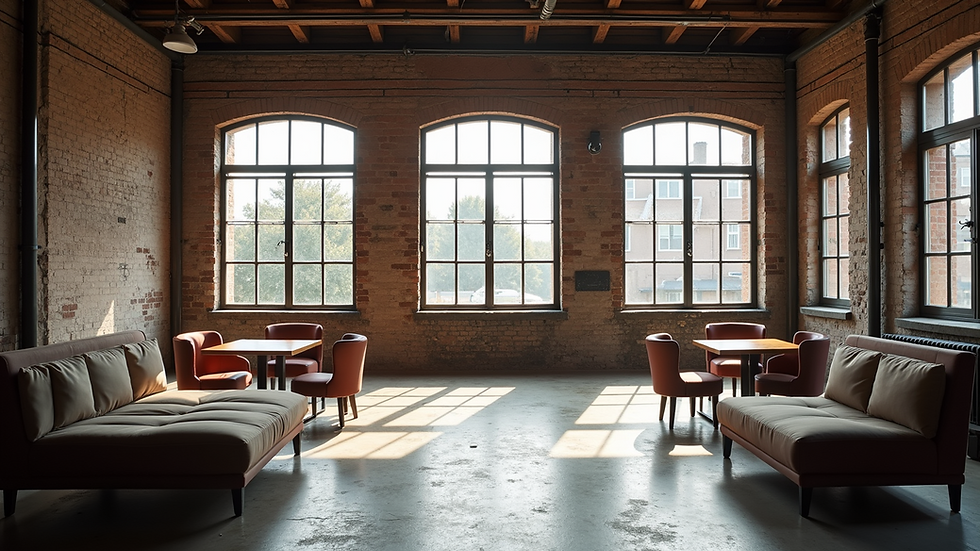Adaptive Reuse: How Classic Architecture Meets Modern Office Design
- louai86alsam
- Jul 13
- 3 min read
In today's changing workplace, businesses are reconsidering what makes an office worth the travel. With mixed schedules becoming the norm, modern workplace architecture has evolved toward creating places that feel more like tailored experiences than cubicles. One of the most effective strategies? Historic architecture can be adaptively reused.
Why Vintage Buildings Are the Future of Modern Office Design
Businesses are putting employee well-being and engagement first, more than ever before. Vintage buildings, with their authentic architectural appeal, provide an unparalleled canvas for design inventiveness. Hand-laid brick walls, big windows, and iron features all contribute to a sense of place that new construction cannot replicate. These buildings provide an unparalleled combination of antiquity and convenience, thanks to intelligent modernization.
And here's the key: design is more than just looks. Successful renovations include technology, flexibility, and wellness, all of which are essential for today's workforce. It is not enough to have visual appeal; 3D rendering tools allow you to see how these historic structures might adapt to modern work styles before a single wall is touched.
Merging Timeless Architecture With Next-Gen Amenities
3D rendering is one of the most powerful techniques used in this process. Before the first refurbishment begins, high-quality architectural renderings enable developers to design every aspect, from foyer finishes to open-plan layouts. This ensures that the design is both functional and reflects the building's past.
Today's modern office buildings contain wellness suites, equipped turnkey workplaces, and tech-ready infrastructure. These changes are complemented by immersive 3D rendering, which provides tenants with a clear sample of workstations that combine efficiency and comfort. Even features like terrazzo flooring, exposed beams, and ornate stonework can be digitally highlighted prior to installation, allowing all stakeholders to agree on the design direction.

The Importance of Preserving Architectural Identity
Preserving a building's architectural integrity entails more than just preserving the façade. It's about keeping the story going. Designers can use 3D rendering to recreate vintage elements while still including critical changes, such as increased internet access or energy-efficient equipment.
Historic structures in thriving urban districts bring value to their surroundings. These adaptive reuse projects benefit the local economy by recruiting new businesses, increasing foot traffic, and stimulating future development. A regenerated space is more than just a place to work; it is a part of the city's live history.
FAQ: Classic Architecture and Modern Office Design
Why are old structures being repurposed to create modern office designs?
Vintage architecture exudes character and charm that modern buildings frequently lack. With proper modernization, they can suit today's demands while retaining cultural significance.
How does 3D rendering benefit adaptive reuse projects?
3D visualization enables architects and designers to plan improvements precisely. It allows you to visualize how new design features will interact with existing architecture before construction begins.
Can historic buildings truly satisfy current office requirements?
Absolutely. When done correctly, adaptive reuse projects incorporate current infrastructure, collaborative layouts, and health elements, resulting in workspaces that accommodate today's hybrid work culture.

What makes these spaces attractive to tenants?
The mix of timeless architecture, thoughtful design, and modern amenities like furnished suites and tech-ready setups make these buildings highly desirable.
Is adaptive reuse more sustainable than new construction?
Yes. Reusing structures reduces construction waste and preserves historic materials—making it a more environmentally responsible design approach.

Classic architecture can become tomorrow's most desirable office space by combining the past and present through smart design, immersive 3D rendering, and purposeful modernization. This is more than just preserving buildings; it is about envisioning their future.




Comments